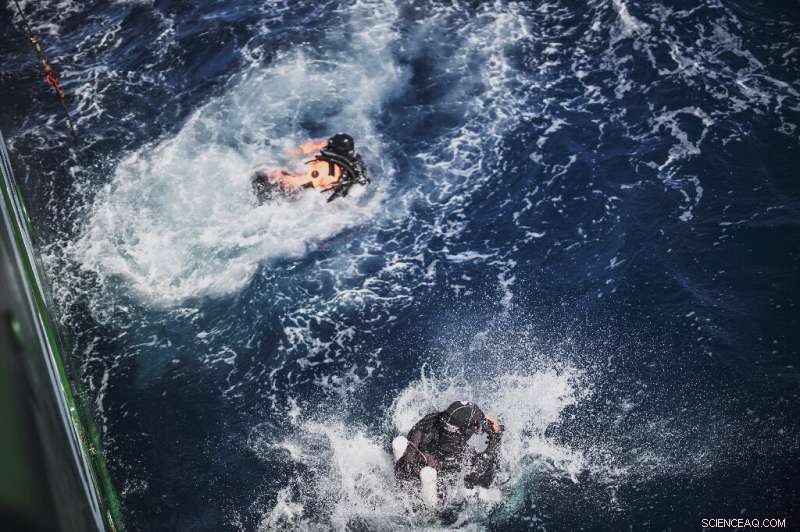
Un tuffo più grande:i subacquei iniziano la loro esplorazione del monte sottomarino Vema
Rivestito con attrezzatura da sub o cerate e stivali di gomma, un team di scienziati e attivisti ha trascorso settimane nell'Atlantico meridionale, tempeste durature e mari agitati per controllare un posto di cui quasi nessuno ha sentito parlare.
La loro missione:monitorare una montagna sottomarina alla ricerca di indizi sul riscaldamento globale e sull'inquinamento da plastica e controllare l'impatto di un divieto di 12 anni sulla pesca a strascico.
I ricercatori di Greenpeace hanno navigato per mille chilometri (600 miglia) a nord-ovest di Città del Capo verso Vema Seamount, uno dei più notevoli, ancora poco conosciuto, caratteristiche del Pianeta Blu.
La montagna vulcanica si erge un colossale 4, 600 metri (15, 000 piedi) dall'abisso oceanico, alto quasi quanto il Monte Bianco, il punto più alto d'Europa.
La sua punta conica, eroso a una cima piatta dalle onde nel corso di migliaia di anni, raggiunge a soli 26 metri (85 piedi) dalla superficie.
I giornalisti dell'AFP si sono uniti all'equipaggio di 30 persone, scienziati e attivisti per 10 giorni della loro esplorazione di tre settimane.
A bordo della nave da ricerca Arctic Sunrise, subacquei specializzati condividevano battute mentre indossavano mute stagne arancioni e nere, legato su bombole d'aria e sottoposto ai controlli finali delle telecamere ad alta risoluzione.
Sono saltati fuori dalla porta del pilota, scomparendo nelle profonde acque blu per circa 45 minuti, un rituale due volte al giorno, tempo permettendo.
Sotto le onde, i subacquei hanno prelevato campioni e registrato un inventario della vita marina.
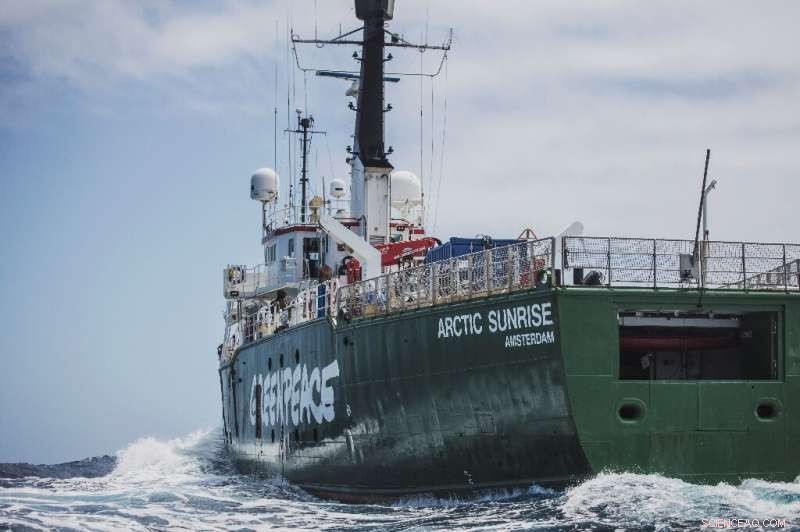
L'alba artica, un rompighiaccio norvegese di 45 metri (147 piedi)
paradiso dell'oceano
Vema è un'oasi oceanica:la sua sommità poco profonda è bagnata dal sole, consentendo alghe, alghe e corallo nero per crescere, che a loro volta pescano pesci e crostacei.
I subacquei sono riemersi, euforico.
"C'erano molti pesci intorno a noi, nuotando intorno a noi, in un grande cerchio. È stato assolutamente fantastico da vedere. Bellissimo!" ha detto il subacqueo olandese Sander Jansson.
Vema, che prende il nome da una nave che lo scoprì negli anni '50, si trova in acque internazionali.
Poco più dell'1% delle aree oceaniche che si trovano al di fuori delle giurisdizioni nazionali beneficia di una qualche forma di protezione internazionale, secondo il sito web di Ocean Action delle Nazioni Unite.
Vema ha la fortuna di essere una delle pochissime zone dei mari profondi che gode di un tale scudo.
Nel 2007, un organismo intergovernativo per la scienza e la gestione della pesca, l'Organizzazione per la pesca nell'Atlantico sudorientale (SEAFO) ha vietato la pesca a strascico su Vema e su altre montagne sottomarine.

Il biologo marino Thilo Maack informa il team di Greenpeace sul Vema Seamount. La zona sembra riprendersi dalla pesca eccessiva, ma come i mari ovunque sono colpiti dal riscaldamento globale
Alcune delle specie di Vema sono chiaramente fiorite da allora.
"C'è così tanta vita laggiù, ", ha detto il biologo marino e capo spedizione Thilo Maack.
"C'è il gambero, ci sono molte alghe, ci sono un sacco di spugne e pesci di ogni tipo".
Ha aggiunto:"Questo è solo un perfetto esempio di ciò che accade se lasciamo la natura da sola per un certo periodo di tempo anche se è stata sovrasfruttata, si ricaricherà".
La prospettiva più soleggiata si estende anche all'aragosta di Tristan, una specie che è stata portata due volte quasi all'estinzione per soddisfare la domanda di pesce nell'Asia orientale.
"Chi dice che non ci sono aragoste laggiù?" ha scherzato il subacqueo tedesco Pascal van Erp mentre tornava sul ponte dopo la sua prima immersione.
When the current was too strong for divers to go into the water, the researchers launched an underwater drone and sat inside a blue shipping container on the ship's deck, monitoring screens sending back video footage.
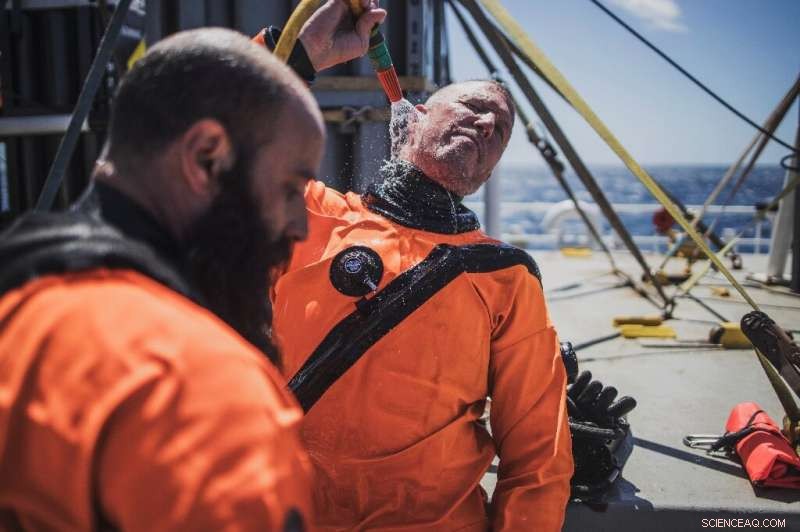
Divers rinse themselves with clean water after a dive to the seamount
Need for protection
Marine conservation organisations are pushing for ocean havens to be vastly expanded.
Greenpeace has mounted a pole-to-pole Arctic-to-Antarctic expedition to lobby the UN to come up with an international legally-binding treaty that protect at least 30 percent of the world's deep oceans from human activities and industrial fishing by 2030.
The UN is negotiating new policies and these which should be finalised at a global conference early next year.
Francois Engelbrecht, professor of climatology at South Africa's University of the Witswatersrand, said the plight of the oceans was like the fight against climate change—both had to be addressed at a planetary level.
"The entire Earth system is connected, it is a coupled system, and changes in one part of the world sooner or later affect many other parts of the world, " Egli ha detto.
"So the international efforts to protect the oceans and to mitigate climate change are in fact an effort that requires tremendous international cooperation."
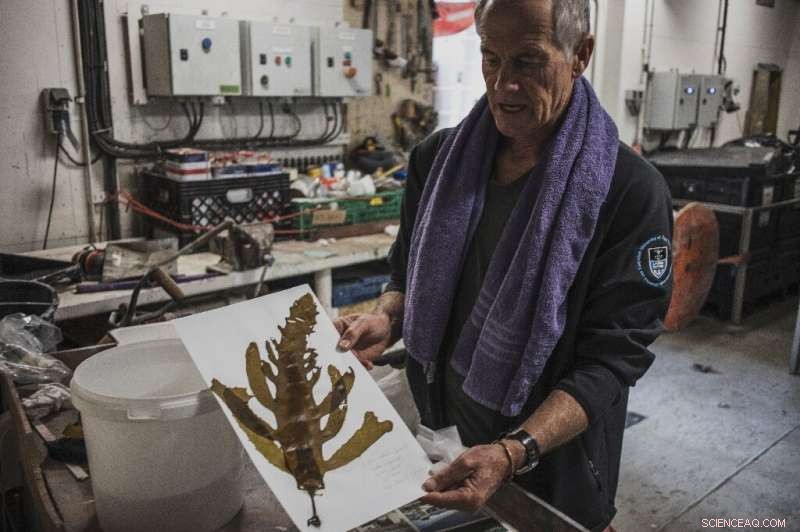
Marine biologist Robert Anderson prepares kelp samples for drying and analysis
Climate peril
The oceans play a vital role in the grim calculus of global warming.
They are, allo stesso tempo, a shield against warming, a future accelerator of it and a victim of it.
By absorbing a quarter of manmade carbon dioxide (CO2) and more than 90 percent of the heat generated by greenhouse gases, oceans avoid huge amounts of atmospheric warming, says the UN's top scientific panel, the Intergovernmental Panel for Climate Change (IPCC).
But warmer oceans means rising sea levels, as well as stored heat that will ultimately be released to the atmosphere—climate-altering mechanisms that may function for centuries to come.
"A breakdown in climate will ultimately impact on our oceans, " Bukelwa Nzimande, 29, a South African activist.
"They act as carbon sinks, they hold lots of wildlife which captures the carbon, at the same time they absorb excess heat that would ideally be felt by us as humanity."
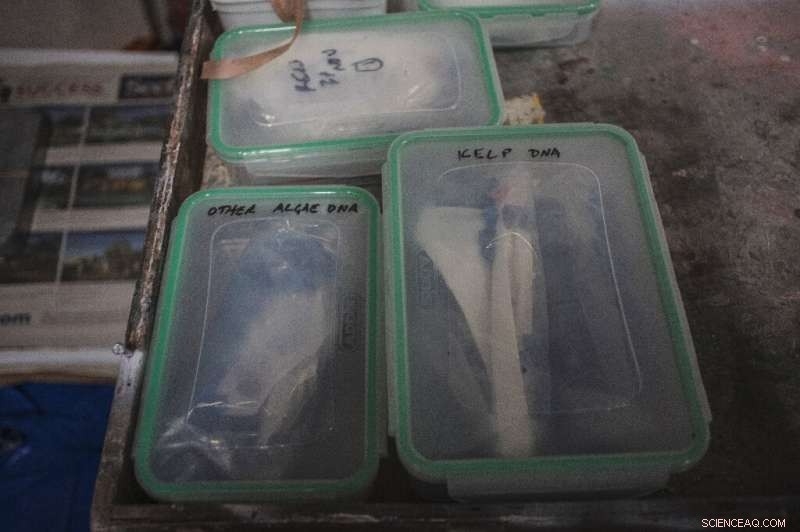
Samples are logged and stored for scrutiny in the lab
Higher sea temperatures and acidification caused by CO2 absorption are widely feared because of their impact on marine biodiversity, although this remains poorly understood.
One of the tasks at Vema was to look for evidence of whale migration and compare that with past years.
By comparing patterns of migration times, scientist hoped to make deductions over any changes to currents and feeding grounds.
Another priority was to look for discarded plastic, which is emerging as one of the biggest threats to marine wildlife.
Plastic bags can be swallowed by marine mammals, and small species absorb minute plastic particles that then accumulate up the food chain.
The UN estimates that 640, 000 tonnes of fishing equipment is discarded around the oceans each year.
Despite the general pristine state of Vema and the ban on fishing, there was evidence that fishing had taken place at Vema.
Divers found a lobster pot and video footage from a drone showed pieces of abandoned fishing nets, known as ghost gear.
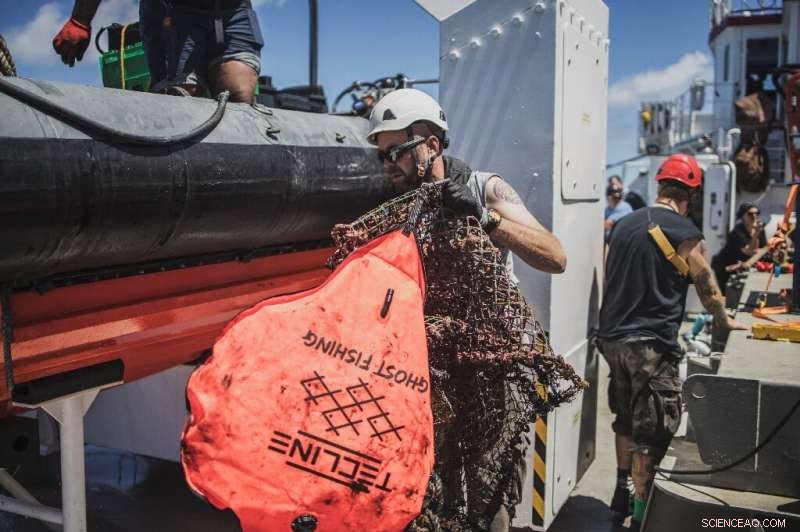
Ghost hunt:A Greenpeace crew member retrieves a device to identify abandoned nets and other fishing equipment. 'Ghost gear' is a major hazard for marine life
Life at sea
There were more than 30 crew, scientists and activists aboard the Arctic Sunrise, a 45-metre (147-feet) Norwegian-built ice breaker.
They hailed from South Africa, Germania, Netherlands, Belgium and Britain, among other nations.
They shared small cabins equiped with bunk beds, complete with guard rails for the stormy days when the ship swayed violently from side to side.
"Even if my employer today says there's no more money to pay me a salary, I will continue doing what I'm doing, " said deckhand Barry Joubert, 39, who quit his job at a game reserve in Parys, South Africa five years ago to join Greenpeace.
South African-born captain Mike Fincken, 55, spends six months of the year away from his seven-year-old son in Wales.
One of his deck assistants is Tuleka Zuma, a 31-year-old mother of an 18-month-old toddler back in South Africa's southeastern KwaZulu-Natal province.
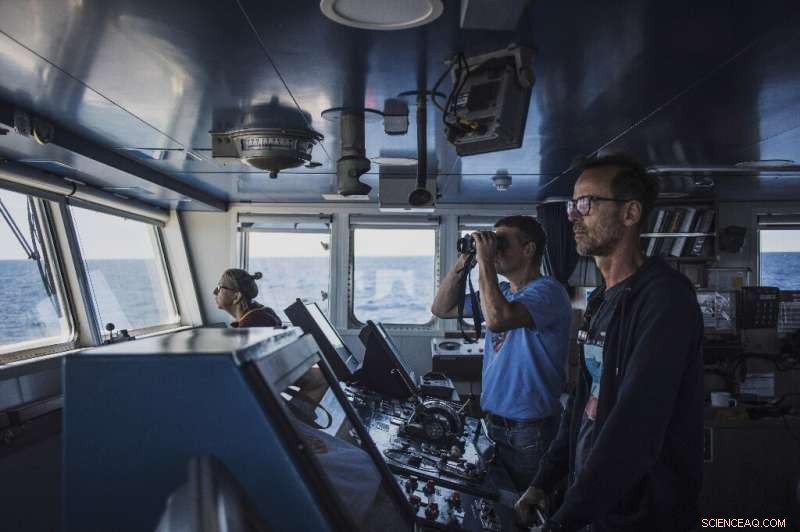
View from the bridge:Captain Mike Finchen, Giusto, and marine biologist Thilo Maack, looking through binoculars
Celine Desvachez, a 27-year-old Belgian boat pilot, said she cannot "find any meaningful way of living my life" other than doing what she did.
"Actually my personal battle is when I go off the ship, " lei disse.
© 2019 AFP